A 109 that has changed sides: Bf 109 G-10 "White 45" in the midst of the "Trieste Crisis”
In October 1953, the ground, naval and air forces of Italy and Yugoslavia confronted each other in the northern Adriatic around the city of Trieste, ready to enforce their countries' interests by force of arms if necessary. Trieste had always been of the highest strategic and economic importance for both Italy and Yugoslavia - and in 1953 it seemed as if they were prepared to go to war for this value. In the midst of all this was the Bf 109G-10 shown here of the 83rd LAP, a unit of the still young Yugoslavian Air Force. It was piloted by Captain Franc Rupnik. Diplomacy was still in control of the situation, but the signs pointed to war. The circumstances that led to this dramatic situation are on the one hand typical of the time, but on the other hand also very unusual-and thus well worth a brief look!
In 1946, the UN decided to found a new state, the "Free Territory of Trieste" (FTT) - in Italian "Territorio libero di Trieste" or in Slovenian/Croatian "Svobodno tržaško ozemlje/ Slobodan teritorij Trsta", in order to end the old dispute over the ownership of this important city with a new approach. As a provisional arrangement, the new Republic of FTT was to be administered for the time being by two unequal victorious powers of the Second World War: the British had the northern half of the country with the city of Trieste under their responsibility, in the southern part of the country the communist Yugoslavia took the decisions.
However, like many of the young UN's partition plans, this new creation of a state was not to bring lasting peace to an area of conflict. After Yugoslavia finally broke away from Stalin in 1948 under Tito, it also took new paths in foreign policy with self-confidence. The "Free Territory of Trieste", on the other hand, was still politically unstable at the beginning of the 1950s. The flare-up of the Cold War brought a new, destructive dynamic into this unstable structure. In view of the unstable state of the FTT and the fact that the Western-democratically oriented British and Italians now regarded Tito's communist Yugoslavia as an enemy, the old national desires had been reignited and now threatened to lead to war.
BF 109 G -10, "White 45
The fact that eight years after the end of the World War Bf 109s were still being used by front-line units can be quite remarkable. It is interesting to look at the origin of this aircraft type in Yugoslavian stocks. Those models that were still flying in the early 1950s were surprisingly mainly from Bulgaria. The Paris Peace Treaty only allowed Bulgaria to have a greatly reduced air force, and Yugoslavia was able to buy the Bf 109s, mainly G and K, that had become surplus in this way.
Yugoslavia did not have its own production, as was the case in Czechoslovakia at the time, so all Bf 109s came from German production. The appearance of the "White 45" even provides more information: it was produced in the WNF factory in Wiener Neustadt. These aircraft are quickly recognisable by the elongated overhangs of the landing gear bays in the inner areas of the upper wing surfaces.
The colour scheme and markings of Captain Rupnik's 109 largely correspond to the standard of the Yugoslavian Air Force of the time, only the camouflage with the brown patches applied by the unit itself is unusual. This measure, which incidentally can also be found on other aircraft of the 83rd JAP, probably reflects the vigilant mood of the 83rd JAP, which had been put on standby. However, the most obvious sign of the heated atmosphere is the remarkable lettering that was painted on the upper surfaces of the two wings. The translation of the slogan is: "Whoever attacks our country will perish in it".
The practice of applying lettering with more or less patriotic statements is familiar from Soviet aircraft; this expresses the initial closeness of the two communist states. The organisational structure of the Yugoslavian air force is also an expression of this closeness. Analogous to the Soviet system, the flying units are also divided into divisions, regiments and squadrons. The designation 83. LAP, in full text "Lovački Aviacijski Puk - LAP", translates accordingly as "83rd Fighter Aircraft Regiment".
Still in the year of the climax of the "Trieste Crisis" described above, the last Bf 109s were deleted from the inventory of the Yugoslav People's Army. A lack of spare parts and obsolescence of the airframes had led to the withdrawal of the last models of this legendary fighter by the beginning of 1954. It remains remarkable how long Messerschmitt's remarkable design remained in first line units.
1953 was also the year in which the fate of the "Free Territory of Trieste" was to be decided.
In the end, a diplomatic solution was found, the essential points of which still exist today: the northern part of the FTT with the city of Trieste was granted to Italy, but under the condition that the city be granted the status of a free port. The southern part of the country with the port city of Koper, on the other hand, was claimed by Yugoslavia; the experiment of the "Free Republic of Trieste" was thus history as of 1954. Incidentally, an indication of the explosive power this area still possesses today can be found in the recent massive disputes between Slovenia and Croatia over the territory of the city of Koper.
To the building process
For the realisation of this remarkable Bf 109 G-10 I used the proven kit from Eduard. Not only the kit impressed me, but also the excellent and beautifully done decal sheet "The Last in Line - Messerschmitt Bf 109 G-10 WNF" from Exito. The decals were all easy and pleasant to work with. The high quality is also shown by the fact that even the distinctive lettering of Rupnik's machine, which has to be applied in two large pieces, could be applied without problems and with good results.
It is really remarkable how diverse Messerschmitt's Bf 109 can be! The astonishment is even greater when one sees how long the 109 was still used after the war.

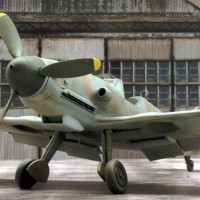
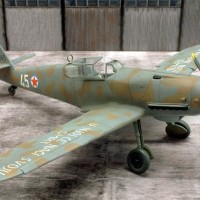
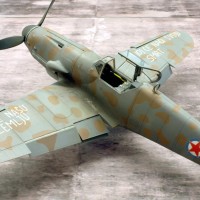
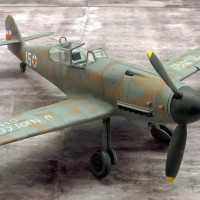

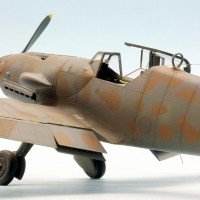
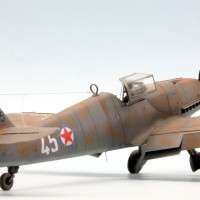
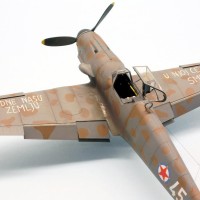
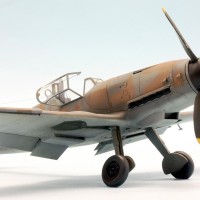
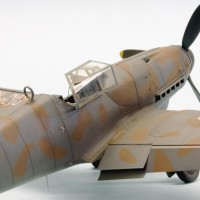
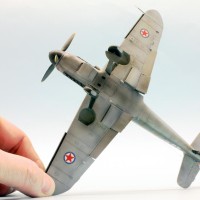
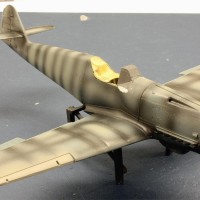
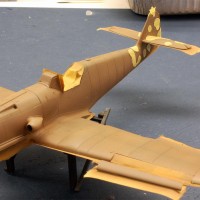
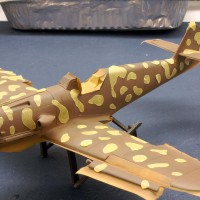
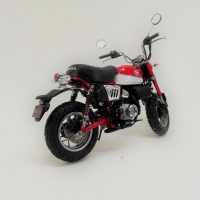
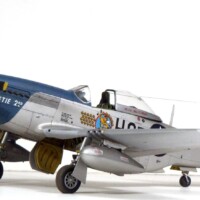
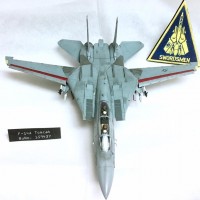

Nicely made!
This pilot Franc Rupnik was my personal friend after retirement he lived in my town.He was born in a nearby village.With him I first flew an airplane in 1979 acrobatic program to the air show.
When I discovered in his piles of picures in 91 a picture of this messerschmit was a revolutionary discovery. Following the suggestion he then made decals.
https://blueriderpublishing.com/
https://blueriderpublishing.com/shop/p/insignia-magazine-vol-1-no-3
His son is also a plastic kit builder in recent years pausing work and family.
Samo/ P.k
Model making always manages to amaze me: thank you for this incredible infos. A few pieces of polysterol glued together is immediately given life by your story! I had to search for the individual parts of the events mentioned in my article. Although I live in Austria myself and am therefore not far from the scene of the event, I was not aware of these circumstances. Your words give all this a biographical background: real people, real fates!
I thank you for this information; also for the reference to your really wonderful decal production! You certainly have me as a customer, I just have to work my way through the delightful and huge offer!
Excellent work on this exceptional 109, Roland @rosachsenhofer
Thanks for sharing the amazing background that goes with it.
Thank you very much John, I appreciate your words very much!
Pilot Franc Rupnik was one of the main test pilots in Yugoslavia until his retirement.
Fascinating and extremely interesting, thank you. What biographies are behind these aircraft!
Yet another amazing model coupled with an equally amazing story, Roland! I had no idea for this conflict and the role the Bf-109 played. It is really remarkable how a story can be coupled with a model!
Well done my friend!
Thank you, my friend, I am happy to have been able to offer interesting things!
Fantasticx! There isn't a day goes by when I don't learn something new on these pages. Excellent 109 build to go with it.
I am very happy to read that!
Great history lesson Roland, and an equally fine model! ? Thanks on both counts; I enjoyed each a lot! ?
Thank you! I appreciate your words very much!
Dang it, another beautiful and unique 109 to have to add to my 109 project!
Wonderfully done! I'm going to PM you for some additional details (provided they have decals for a 1/72 version of this...I'll look at that now).
By the way - just took delivery of a Revell G-10 from ebay yesterday...
Thank you very much, and yes, there is a decal sheet in 1:72! I will be glad to read from you!
Another excellent result from Sachsenhofer Flugzeug A.G. And as usual, a nice history lesson about Stuff I Never Knew. It doesn't get better than that!
Highly appreciated words from you - thank you for this feedback!
Great 109 build and story!
Thank you very much!